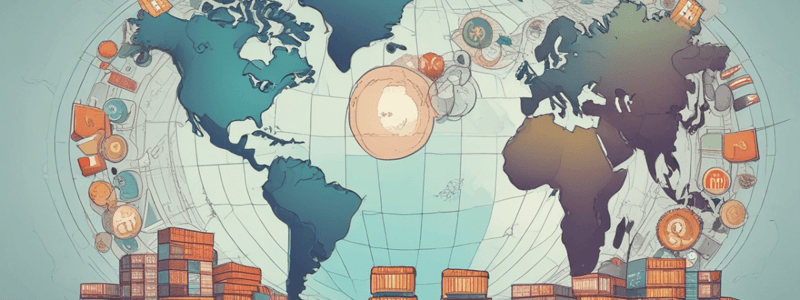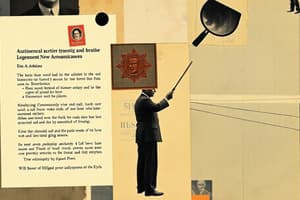Podcast
Questions and Answers
What problem did the GATT aim to solve?
What problem did the GATT aim to solve?
High tariffs and beggar-thy-neighbor policies of the interwar period
What was the primary objective of the GATT founding nations?
What was the primary objective of the GATT founding nations?
To decrease the high interwar tariffs significantly
How did the Smoot-Hawley Act of 1930 impact international trade?
How did the Smoot-Hawley Act of 1930 impact international trade?
It triggered a trade war as many European countries increased their tariffs in response.
What role did the GATT negotiations play in international trade?
What role did the GATT negotiations play in international trade?
What has been the impact of GATT/WTO on tariffs since their establishment?
What has been the impact of GATT/WTO on tariffs since their establishment?
How would you describe the membership of the WTO?
How would you describe the membership of the WTO?
What is the role of the GATT/WTO in trade liberalization?
What is the role of the GATT/WTO in trade liberalization?
Why is the GATT/WTO needed to achieve trade liberalizations?
Why is the GATT/WTO needed to achieve trade liberalizations?
What does the GATT/WTO aim to prevent in international trade?
What does the GATT/WTO aim to prevent in international trade?
How does the GATT/WTO contribute to global welfare gains?
How does the GATT/WTO contribute to global welfare gains?
What would happen if trade liberalization was not facilitated by the GATT/WTO?
What would happen if trade liberalization was not facilitated by the GATT/WTO?
In the absence of the GATT/WTO, what challenges would arise in achieving international cooperation for trade?
In the absence of the GATT/WTO, what challenges would arise in achieving international cooperation for trade?
What is the concept of 'balance of concessions' in international trade?
What is the concept of 'balance of concessions' in international trade?
Explain the significance of reciprocity in trade negotiations.
Explain the significance of reciprocity in trade negotiations.
How does the GATT/WTO deal with Most Favored Nation (MFN) status exceptions?
How does the GATT/WTO deal with Most Favored Nation (MFN) status exceptions?
Explain the purpose of the General System of Preferences (GSP) in international trade.
Explain the purpose of the General System of Preferences (GSP) in international trade.
What is the impact of trade liberalization rounds, particularly the Uruguay round?
What is the impact of trade liberalization rounds, particularly the Uruguay round?
How did the GATT evolve into the WTO and what was the significance of this transition?
How did the GATT evolve into the WTO and what was the significance of this transition?
Flashcards are hidden until you start studying
Study Notes
- The General Agreement on Tariffs and Trade (GATT) was established after World War II to undo high tariffs and prevent trade wars like those during the Great Depression, leading to significant tariff reductions.
- The World Trade Organization (WTO), the successor to GATT, has a broader agenda covering areas beyond manufacturing like agriculture, services, and intellectual property rights, with a focus on nontariff issues.
- The WTO's dispute-settlement resolution is an important innovation meant to formally settle violations of WTO rules and ensure fair trade practices among member countries.
- The GATT/WTO is necessary to bring about trade liberalization by facilitating international cooperation and avoiding tariffs and tariff wars that would make everyone worse off.
- Trade liberalizations have been gradual and spread over multiple negotiation rounds, with the Uruguay round being the most impactful, leading to the establishment of the WTO on a more solid institutional foundation.
Studying That Suits You
Use AI to generate personalized quizzes and flashcards to suit your learning preferences.




